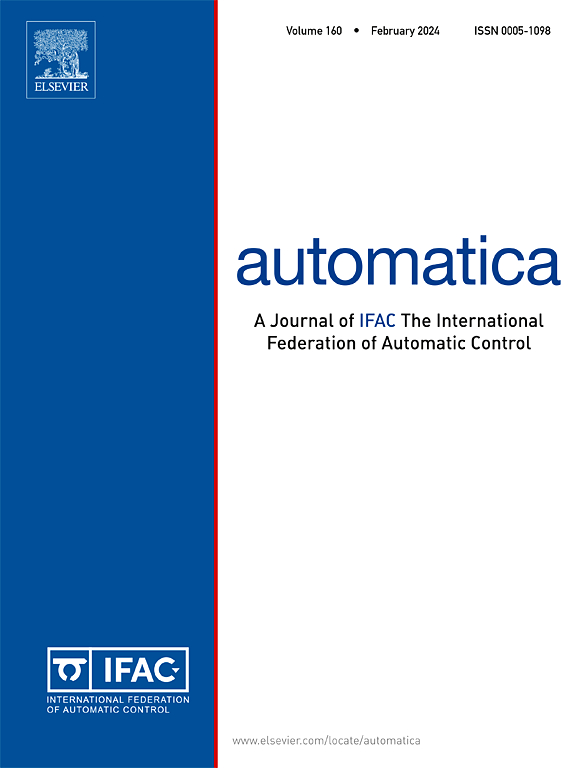多链路无线网络控制系统随机稳定的发射功率策略
IF 4.8
2区 计算机科学
Q1 AUTOMATION & CONTROL SYSTEMS
引用次数: 0
摘要
由于电池电量有限,发射功率控制在无线网络中至关重要,它通过降低功耗对经济和环境产生影响。高发射功率会缩短节点寿命,造成干扰和污染。无线网络中的现有研究主要集中在服务质量和信道容量等通信方面的功率策略,而无线网络控制系统(WNCS)则需要针对稳定性等面向控制的要求调整策略。近期控制界的研究主要集中在线性系统或单链路视角的非线性系统。本文介绍了一个框架,用于为更广泛类别的非线性工厂和多链路场景设计稳定的发射功率水平。通过考虑信道成功概率和发射功率之间的非线性关系,我们建立了连接信道概率和传输速率的稳定条件。这些结果以及实用的干扰模型为稳定非线性和多链路 WNCS 的发射功率提供了一种方法。本文章由计算机程序翻译,如有差异,请以英文原文为准。
Transmit power policies for stochastic stabilisation of multi-link wireless networked control systems
Transmit power control is crucial in wireless networks due to limited battery power, impacting both economic and environmental aspects by reducing power consumption. High transmission power diminishes node lifespan, causes interference, and pollution. Existing work in wireless networks mainly focuses on power policies for communication aspects like quality of service and channel capacity, while wireless networked control systems (WNCSs) require adapted policies for control-oriented requirements such as stability. Recent research in the control community has predominantly focused on linear systems or non-linear systems with a single-link perspective. This paper introduces a framework for designing stabilising transmit power levels for broader classes of non-linear plants and multi-link scenarios. By considering the non-linear relationship between channel success probabilities and transmit power, we establish stability conditions linking channel probabilities and transmission rate. These results, along with practical interference models, offer a methodology for stabilising transmit power in non-linear and multi-link WNCSs.
求助全文
通过发布文献求助,成功后即可免费获取论文全文。
去求助
来源期刊

Automatica
工程技术-工程:电子与电气
CiteScore
10.70
自引率
7.80%
发文量
617
审稿时长
5 months
期刊介绍:
Automatica is a leading archival publication in the field of systems and control. The field encompasses today a broad set of areas and topics, and is thriving not only within itself but also in terms of its impact on other fields, such as communications, computers, biology, energy and economics. Since its inception in 1963, Automatica has kept abreast with the evolution of the field over the years, and has emerged as a leading publication driving the trends in the field.
After being founded in 1963, Automatica became a journal of the International Federation of Automatic Control (IFAC) in 1969. It features a characteristic blend of theoretical and applied papers of archival, lasting value, reporting cutting edge research results by authors across the globe. It features articles in distinct categories, including regular, brief and survey papers, technical communiqués, correspondence items, as well as reviews on published books of interest to the readership. It occasionally publishes special issues on emerging new topics or established mature topics of interest to a broad audience.
Automatica solicits original high-quality contributions in all the categories listed above, and in all areas of systems and control interpreted in a broad sense and evolving constantly. They may be submitted directly to a subject editor or to the Editor-in-Chief if not sure about the subject area. Editorial procedures in place assure careful, fair, and prompt handling of all submitted articles. Accepted papers appear in the journal in the shortest time feasible given production time constraints.
 求助内容:
求助内容: 应助结果提醒方式:
应助结果提醒方式:


